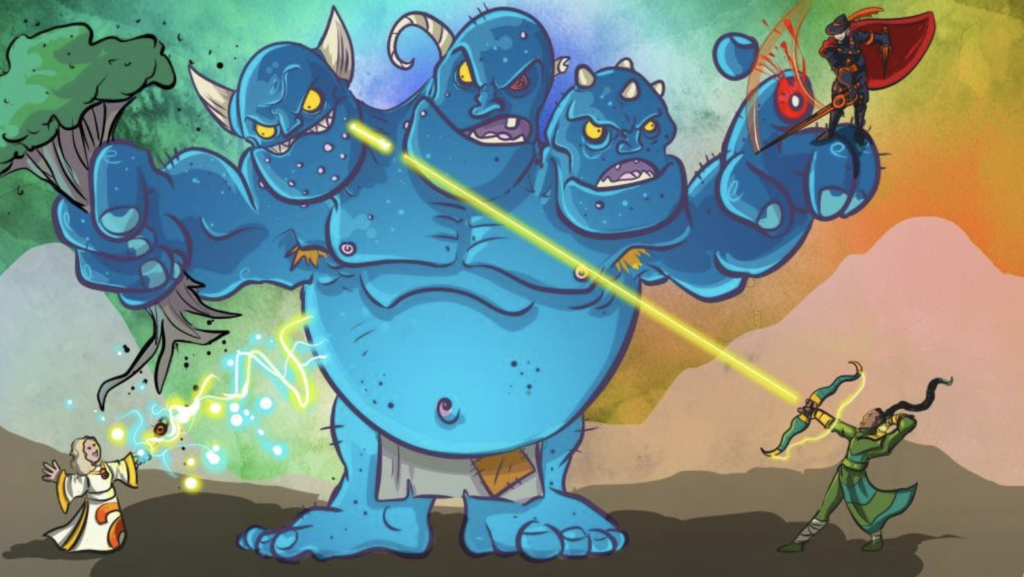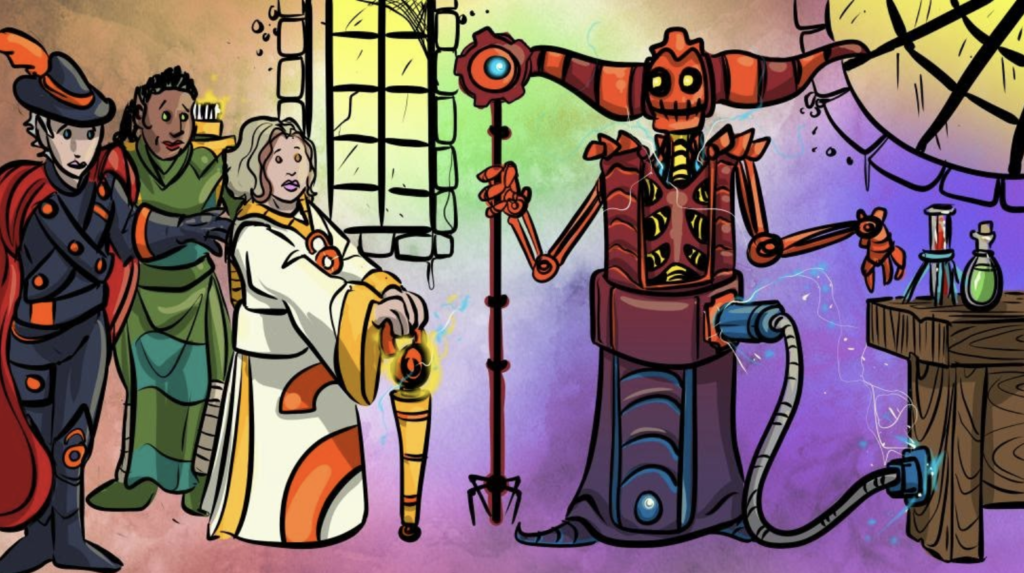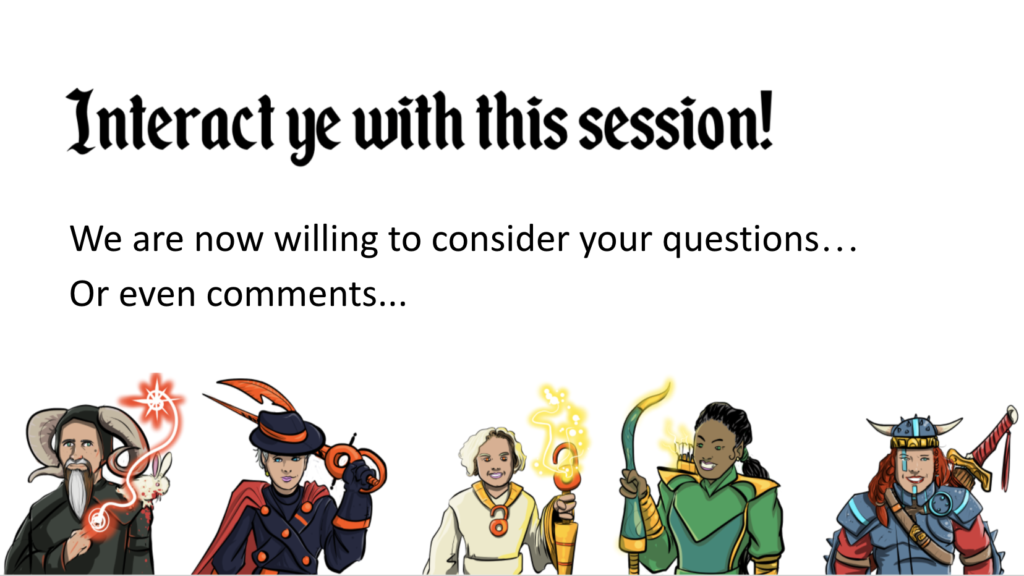Many industry conferences, including CSE, have gone online (or hybrid, at least) to comply with COVID-19 restrictions. Online formats necessarily have fewer session tracks, making it even harder to get a proposal accepted; combine that with Zoom fatigue and coming up with an interesting and engaging program is even more challenging. When we are mostly still working and even socializing on our computers, the last thing we may want to do is watch a long uninterrupted set of PowerPoint presentations online. How can we draw the audience in?
Challenges for Programming: Online Conferences
I began my publishing career as a book acquisitions editor, so my conference experience was largely in the exhibit hall, meeting with authors and looking for new projects. Whether it was a history or a library meeting, I rarely took the time to attend informational sessions, and I never gave a thought to who planned them. It wasn’t until I started attending publishing meetings that I really became aware of the volunteers that made such events go. Once I joined a program committee for the Society for Scholarly Publishing (SSP), and got involved with folks from across the industry, I was hooked. What better way to explore interesting topics than to meet the experts and craft sessions that enabled them to share their knowledge? I’m always on the lookout for topics I’ve not seen addressed before and new potential speakers. That has made the COVID transition difficult.
Online conferences are hard for speakers and attendees, but I’ve found that they open up many possibilities for organizers. With increasing emphasis on diversity, it’s been so refreshing to cast a net wider than the folks who could already afford to travel to a meeting. I’ve moderated panels that spanned continents, spanned disciplines, with every age and career stage represented, along with many cultural and ethnic perspectives. With hybrid conferences on the horizon for attendees, I’m hoping that the ability to support remote speakers will remain too. Attendee demographics have also changed, giving the opportunity for those who cannot travel for health, mobility, or time issues. Registration costs are typically lower for online conferences, reducing the financial barrier.
Many conferences pivoted to online formats with almost no notice, and conferencing platforms are still evolving to meet stakeholder needs. I don’t intend any of this to be a criticism of events or platforms, but these are things I have found disagreeable. While recording sessions ahead of time reduces technical issues, there’s something to be said for those speaking live, reacting in response to attendee chats. Some platforms make other attendees invisible, which removes any notion of a shared experience. Speaking at an event like that is like shouting into the void. Recently, more events have offered interactive networking space with tools like Spatial Chat, GatherTown, or REMO. While zipping an avatar around a virtual space is no substitute for meeting in the exhibits or the hotel bar, it does meet some key needs to catch up with friends and meet new people.
Mixing Things up With Interactive Sessions
I’d actually been experimenting with more interactive sessions at in-person conferences for a while, particularly around how to boost audience participation. A typical interactive session involves speakers crafting brief scenarios designed to illustrate a challenge or a misconception around their topic and then providing stakeholder perspectives that speak to that issue. Audience members receive a card identifying them as an author, editor, librarian, or more. They can then choose from answers already on their card (should it be a topic they are not experienced with) or supply their own response if it is an area they know well. Some participants are reluctant; some are eager. Some are deadpan in their delivery; others ham it up. Everyone seems to have a fun time though, and it’s more entertaining than watching a 5 minute presentation on the same topic. Using this format, I’ve helped with sessions on standards, peer review, preprints, and accessibility. (Ask me if you want to know more about this technique which can be adapted to online conferences as well.)
Other interactive formats have included roundtables, interviews, or a riff on “PowerPoint Karaoke” where speakers react to topics depicted in pictures on slides. All of these involve a bit more preparation than the usual 3 presentations plus Q&A format. But I do think it is worth it in terms of the engagement level of the session.
Taking Interactivity to a Whole New Level
Fast forward to winter 2020–2021, I was doing some business development work for a startup called DataSeer (https://dataseer.ai), and we submitted a proposal for SSP later that spring for consideration. I thought we could organize the session as a game that could play out across PowerPoint slides. (Full disclosure: I was thinking Shoots and Ladders or Candyland.) Enter Tim Vines, founder of DataSeer, who had a different idea in mind: Dungeons and Dragons—a quest! One of the key value propositions of DataSeer, which uses machine learning to identify datasets within papers to help authors and editors comply with funder mandates, is compliance. Our draft title: “Walking the Rocky Road from Policy to Compliance: A Live Adventure.” Online D&D is already well established, as is tuning in to watch other people play via, e.g., Twitch, so the idea of transplanting it into a conference session wasn’t as crazy a leap as it might sound.
We had some initial ideas for speakers, but we needed to be sure they would be comfortable with our approach. We were going to need them to be onboard in crafting the quest narrative. That meant securing speakers with the relevant expertise who would be willing to put themselves out there a bit (and, as it turned out, fashion some rudimentary costumes).
We couldn’t have gotten luckier with an amazing set of presenters, as seen in their entertaining introductions below. With 2 speakers on the U.S. East coast, 1 in Vancouver, and 2 in Brisbane, our planning calls were sometimes challenging to schedule, but everyone was so committed to the project that they were always a pleasure.
Below is Tim’s entertaining introduction:
Our Ranger, Jessica Miles, is from an obscure organization known only as “Elsevier.” Rumour has it that she has tamed numerous strange beasts known as “Trends Journals” and must struggle daily to keep up with their demands for fresh manuscripts to devour. I suggest that you stay on her good side.
Our Cleric, Natasha Simons, hails from the sacred order of the Australian Research Data Commons. The order devotes itself to making things open, particularly datasets and research infrastructure, but also cans and cupboards. Beware, for the order’s influence grows throughout the land.
Finally, you are fortunate to be joined by our dashing Brava, Ginny Barbour. She has been the hidden hand behind many pivotal events in the land of science publishing. She was there when PLOS Medicine was discovered. She ruled the Committee for Publication Ethics for many years, and lurked in the shadows as the great guidelines of PRISMA and CONSORT were forged from community consensus. Even now, she flits between an identity at Queensland University of Technology and a disguise as the director of Open Access Australasia.

We knew we wanted to depict a quest, but what kind of quest with what challenges or obstacles? Tim’s creativity was boundless. We settled eventually on 3 obstacles that each journeyer would have the expertise to navigate. A friend of Tim’s brought all of us and the obstacles to life in amazing drawings. We battled the 3-headed troll of conflicting mandates, outwitted the Wizard of Machine Actionable Metadata, and avoided the temptations of the Chasm of Publishing Integrity to reach the Castle of Compliance! Along the way, Tim’s carefully crafted script was brimming with entertaining references to publishing, societies, standards, and more. However, we wanted to take this game a step further.

From the outset, we knew we wanted to involve the audience, and we settled on a tool called Slido (https://www.sli.do) which attendees could navigate to via a link. Each obstacle had a question with multiple fun answers to get our band past the challenge. The last question was created as a riddle, incorporating the four FAIR data principles into the responses—with yours truly doing the big reveal! Our weary travellers celebrated in the Castle of Compliance. We even had time for questions.
On the day itself, our players were bristling with energy. We’d done some run-throughs, but never truly tested it for time. We knew we were going to have a lot to juggle with Slido responses. In general, I’d give us good marks on technical navigation. Tim forgot to return to the slides at one point, and we had some issues getting Slido results to appear properly. But, judging from the audience responses (in particular the always evocative Anna Jester), nobody was too critical of these foibles. I had said all along the session would be epic—either an epic fail or epic, and I’d say that we pulled it off.
I leave you with an additional excerpt from the session, below. I’d love to hear about your creativity for past and future sessions. Let’s take these presentations to the next level!
The Cleric’s Challenge
As they reach the wrought iron gates, Blessed Natasha steps forward and runs her hand over the metal. With a shudder she realizes that she recognizes these symbols. They’re poorly formatted DOI’s! What mad hand could create such a monstrosity?
Our party’s vision swims and with a lurch they find themselves suddenly inside the tower. Across the room stands a strangely wired wizard…
With a crackle the wizard turns to face them. “More poor fools trying to reach the Castle of Compliance! What makes you think your feeble bodies can make it there without my help? The road is paved with millions of research outputs and more appear every day! No… you must pay tribute to me, for I am the Great Wizard of Machine Actionable Metadata. Without my help, every path you take from here generates a 404 error.”
The party huddles around—what offering can they make to satisfy the Wizard of Machine Actionable Metadata? Should they try to defeat it instead? Dear audience, they cast their beseeching eyes to you!

[Poll 2 opens]
Help Natasha choose among these 4 options!
- The party promises to label every one of their possessions with an RRID.
- Ask the wizard if it’s OK if only one of the party has an ORCID and hope it explodes.
- Vow to henceforth always add a data citation to their references section.
- Apologize profusely for not acknowledging the funding for this expedition, but explain that “stolen dragon hoard” wasn’t on the FundRef list
Heather Staines (0000-0003-3876-1182) is Senior Consultant at Delta Think where she is also Director of Community Engagement for the Open Access Data & Analytics Tool.
Opinions expressed are those of the authors and do not necessarily reflect the opinions or policies of their employers, the Council of Science Editors or the Editorial Board of Science Editor.
